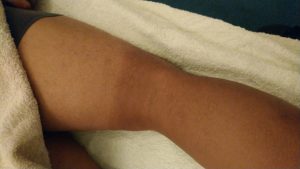


The Fabella Bone
The fabella bone is making something of a comeback following a reversal in human evolutionary development. The fabella is a sesamoid bone, which means that it is not connrected to the wider skeletal structure and is located within a tendon, sliding over a larger bony surface. The patella (kneecap) is the most well-known sesamoid and is much larger.

The fabella bone is found at the posterior and lateral aspect of the knee
The fabella is located behind the lateral femoral condyle in the lateral head of the gastrocnemius muscle. Common in other mammals, it has been mostly absent in human who have lost it through the evolutionary process.
However, a recent article in the Journal of Anatomy based upon a systemic review of anatomical literature going back 150 years has found an increase in the prevalence of the fabella in humans, so that its three times more common now than it was in 1919.
The fabella is now present in an estimated 39% of people. One theory about why this bone may have returned is increases in human weight and height, putting more pressure on the knee joint. Improvements in diet, lifestyle, and healthcare have meant that humans have grown larger over this same period.
The fabella seems to play a protective and supportive role for the knee, in much the same way as the patella (kneecap) does. However, as with any joint in the body, the more complicated it is be necessity, the more potential there is for things to go wrong. Possessing this extra bone increases the risk of osteo-arthritic conditions. Fabella Syndrome may be the cause of pain in the postero-lateral aspect of the knee and a catching sensation with knee flexion.
If you want to read more about the fabella bone, click here.
To find out more about acupuncture and knee pain presentation, click here.


